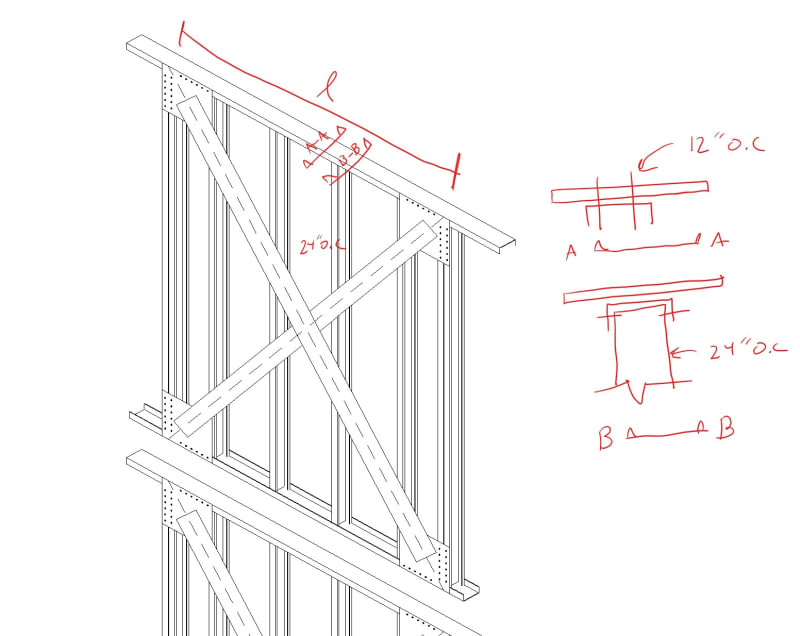Designing a multistory Strap brace. When a track is in compression and the web of the track is connected to the diaphragm with studs spaced @ 24” o.c. does the track have to be designed for compression for the full length or can it at a shorter length? Example, in the attached picture, if he Strap Brace is 20 feet, and there is 10,000 lbs of compression loading, does the Track have to be designed based on a 20-foot-long chord? If connected at 12” on center at the diaphragm w/ screws and studs are spaced at 24” o.c., can we essentially drop the length when checking compression to 2’-0” or would this be only considered as Flexural Bracing and Axial KyLy, KtLt.
Also, would the design be similar when the force is from the roof diaphragm compared to a floor diaphragm? Since for the track at the floor levels, the joists/studs are compressing the track web on both sides @ 24” o.c.

Also, would the design be similar when the force is from the roof diaphragm compared to a floor diaphragm? Since for the track at the floor levels, the joists/studs are compressing the track web on both sides @ 24” o.c.

